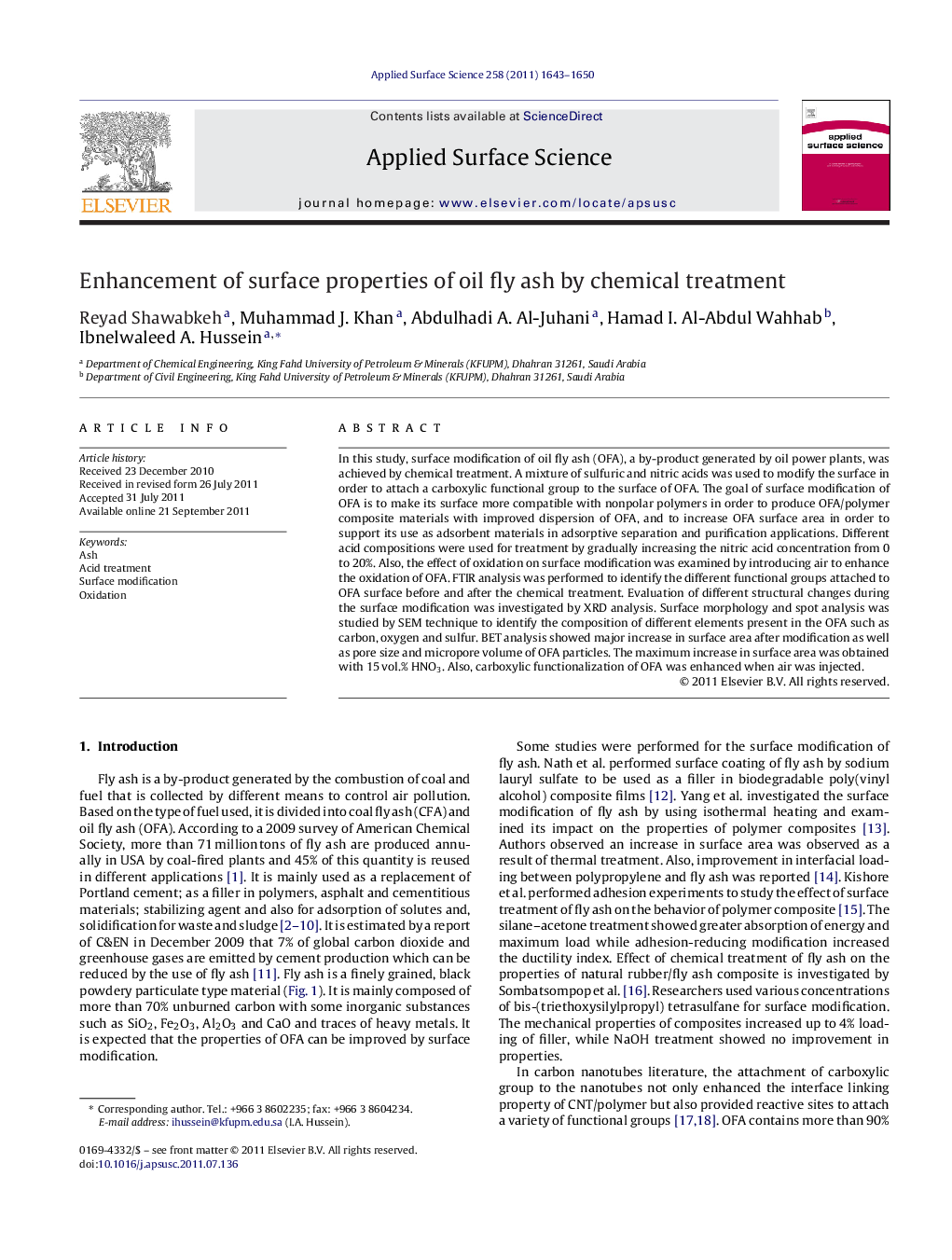| Article ID | Journal | Published Year | Pages | File Type |
|---|---|---|---|---|
| 5366774 | Applied Surface Science | 2011 | 8 Pages |
In this study, surface modification of oil fly ash (OFA), a by-product generated by oil power plants, was achieved by chemical treatment. A mixture of sulfuric and nitric acids was used to modify the surface in order to attach a carboxylic functional group to the surface of OFA. The goal of surface modification of OFA is to make its surface more compatible with nonpolar polymers in order to produce OFA/polymer composite materials with improved dispersion of OFA, and to increase OFA surface area in order to support its use as adsorbent materials in adsorptive separation and purification applications. Different acid compositions were used for treatment by gradually increasing the nitric acid concentration from 0 to 20%. Also, the effect of oxidation on surface modification was examined by introducing air to enhance the oxidation of OFA. FTIR analysis was performed to identify the different functional groups attached to OFA surface before and after the chemical treatment. Evaluation of different structural changes during the surface modification was investigated by XRD analysis. Surface morphology and spot analysis was studied by SEM technique to identify the composition of different elements present in the OFA such as carbon, oxygen and sulfur. BET analysis showed major increase in surface area after modification as well as pore size and micropore volume of OFA particles. The maximum increase in surface area was obtained with 15Â vol.% HNO3. Also, carboxylic functionalization of OFA was enhanced when air was injected.
⺠Treatment of OFA with mixture of H2SO4/HNO3, and air yield carboxylic functionalized OFA and high surface area. ⺠Modified OFA is used with polymer composite to reduce agglomeration in polymer applications. ⺠Modified OFA is more compatible with nonpolar polymers.
